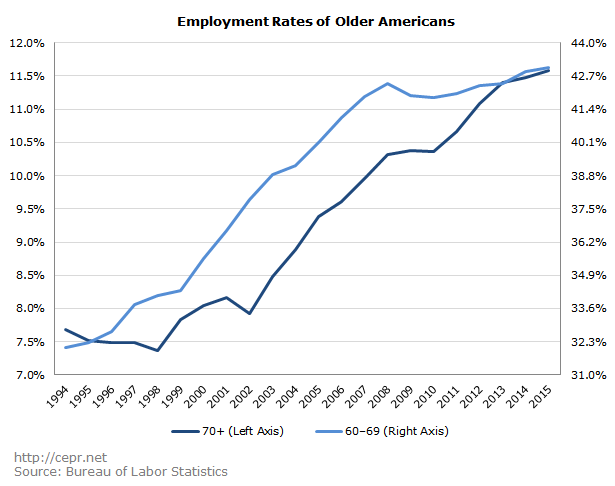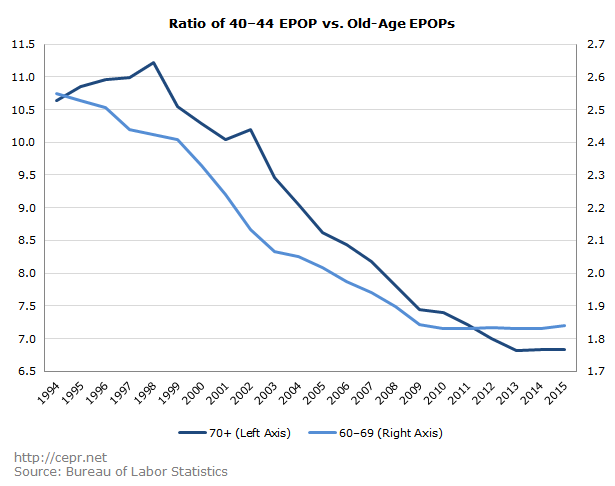May 31, 2016
The 2008 recession caused job losses across the board, but it was especially hard for young Americans. The annual employment rate for 20–24 year-olds declined 8.1 percentage points between 2007 and 2010; for 25–29 year-olds, employment fell 6.0 percentage points through 2011. As of 2015, employment was still down 4.6 percentage points for the former group and 3.1 percentage points for the latter.
By contrast, employment among seniors did not fall during the recession — it actually increased. Between 2006 and 2015, there was not a single year in which employment fell for Americans age 65 and over. Employment in this age group is up 2.7 percentage points since 2007 and is up 3.2 percentage points since 2006.
This has actually been part of a long-term trend of rising employment among older Americans. The graph below shows the employment rate of Americans in their sixties and Americans age 70 and over from 1994 to 2015. Both groups saw record-high employment in 2015.

The rise in senior employment cannot be attributed to more general labor market trends. This can be seen when comparing the employment-to-population ratio (EPOP) for 40–44 year-olds with the EPOPs for seniors. EPOPs are generally higher for 40–44 year-olds than for any other age group because that is when most people are in their prime working years. In the 1990s, 40–44 year-olds were about 2.5 times as likely to be employed as 60-year-olds and were about 11 times as likely to be employed as people aged 70 and over. This can be seen in the figure below. Since 2000, employment has continued rising for seniors even as it has declined among 40–44 year-olds.







